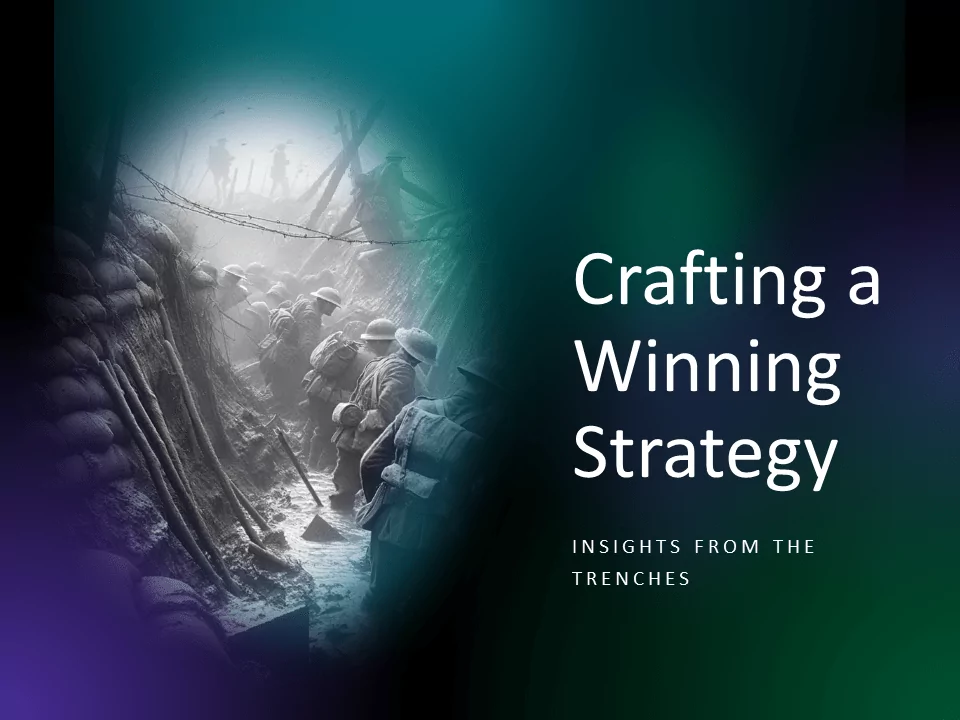The concept of strategy can sometimes feel like navigating through a thick fog. Theories abound, and experts proliferate, each offering their take on the elusive formula for success. But often, all talk about strategy is far from the trenches where the real war is fought. Or as Helmuth von Moltke the Elder, a 19th-century Prussian field marshal put it “No battle plan survives contact with the enemy”.
What on earth does Strategy mean?
Despite strategy’s critical role in organisational success, a universally accepted definition of what strategy means remains elusive. The academic world has not helped us build our strategies. Instead, their contributions have often led to confusion and competing definitions. The truth is that strategy is crucial for delineating a company’s path amidst uncertainty. It is necessary to distil strategy to its essence. Returning to foundational principles is essential to navigating the complexities surrounding strategic planning.
Rather than delving into heavy theory, I want to share some real-life experiences from my career. Anecdotes often offer clearer insight. I hope you can learn some approaches to strategic planning that resonate with the challenges and opportunities faced by your business reality.
The Essence of Strategy
At its core, strategy is about making deliberate choices that set an organisation apart from its competitors. It’s about deciding not only where to compete but how to compete in a way that provides unique value to your chosen customers. This necessitates a clear understanding of who your customers are, what they truly value, and how you can deliver that value distinctively and sustainably.
Real-Life Strategic Choices
Our journey as an organisation serves as a case study in making such strategic choices. When the company was founded, the initial focus was on providing low-cost services to Swedish clients. This was a sensible entry strategy, tapping into our understanding of the Swedish market and leveraging cost advantages. However, as we evolved, a pivotal strategic decision was made to shift our focus towards offering high-value services. This necessitated an increase in fees, which could have been risky but was underpinned by a high commitment to quality that our clients value.
Visual Basic was the go-to for many in the 1990s. Instead, we selected to work with Borland Delphi. It was a technically superior product but with much fewer users. Our decision had nothing to do with deviating from the norm. Instead, it was a strategic move to harness a platform that matched our capabilities and met client requirements. This also made us stand out, embodying the wisdom of being a bigger fish in a smaller pond.
Being Swedish, with a predominantly Scandinavian client base, we intentionally built a flat organisational structure and created an accessible and approachable leadership team. This approach fostered a trust-based, non-bureaucratic culture where team members could directly address customer needs without supervisory approval, which was instrumental in satisfying the cultural needs of Scandinavian clients.
Moreover, in a market where many Indian companies were looking westward towards the US, we strategically focused on Sweden and the UK. This played to our cultural and market understanding and allowed us to find and fill specific niches that larger competitors underserved.
The Outcomes of Strategic Clarity
The impact of these strategic choices has been profound. By not shying away from redefining our value proposition and focusing on markets we understood deeply, we have consistently found new opportunities for impact. This focus has kept us profitable and attracted leading clients in our target markets, underscoring the effectiveness of a well-conceived strategy.
Key Takeaways for Leaders
There are clear lessons for managers and business leaders. Strategy is not about following the herd or getting lost in the latest management jargon. It’s about making clear, informed choices about where to play and how to win. This requires a deep understanding of your market, a willingness to make bold decisions, and the flexibility to adapt and refine your strategy based on feedback from the market and the evolving competitive landscape.
Crafting a winning strategy is about clarity, distinctiveness, and adaptability. It’s about knowing your strengths, understanding your customers, and continuously seeking ways to deliver unique value. As we’ve learned on our journey, such a strategy navigates the fog of competition and charts a course towards sustained success and growth.
In conclusion, the path to strategic clarity and effectiveness is paved with informed choices, a deep understanding of your competitive environment, and an unwavering commitment to delivering value. By embracing these principles, managers can lead their organisations to thrive in the complex and ever-changing business world.
If you want to discuss how we can help you define or implement your strategy, don’t hesitate to contact us today!
